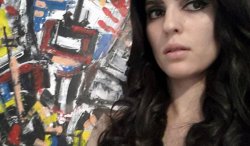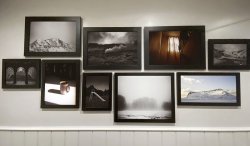- Jobs
- Open Calls
- Events
- Learning
- More
- SUBMIT
Tales, Myths, And Metamorphoses. An Interview with Featured Artist Kirsty Greenwood, by Kristin LaFollette, Mud Season Review Art Editor.

Kirsty Greenwood
Kirsty Greenwood illustration
“I feel my artwork is related through the exploration of change—metamorphosis—and I’m very much drawn to narratives in which that is the central theme.”
Artist, Kirsty Greenwood
Thanks so much for letting us feature this gorgeous portfolio in #62 of Mud Season Review. You mention you are inspired by faerie tales, folklore, myths/legends, transformation, aboriginal cultures, and Quixotism, and these influences clearly come through in this portfolio. How did you become interested in these stories/concepts, and what tales or myths are represented in your featured work? Are the pieces in the portfolio connected?
I grew up on top of a wonderfully windy, wild, and beautiful hill in North Yorkshire and like many, fairy tales and stories of fantastical lands and creatures were an integral part of my childhood reading, so my love of such tales really started there. As I’ve become older, I find stories of transformation and other worlds fascinating because of their relationship to many aspects of our modern lives—metaphorically, psychologically, and literally. I am drawn to these ideas and how they are portrayed in such tales, often in quite disturbing ways, such as the tale of Sedna, goddess of the arctic seas, and Lewis Carroll’s Alice’s Adventures Underground. My favorite novel is Don Quixote de la Mancha by Miguel de Cervantes. Don Quixote sees his life through the filter of pareidolia, which informs his thoughts and actions in a way others see only as madness. His has been one of the defining philosophies I take inspiration from. I feel my artwork is related through the exploration of change—metamorphosis—and I’m very much drawn to narratives in which that is the central theme.
You also note that you are motivated by “pareidolia, ephemeral visual misunderstanding, ocular strangeness, nightmares, dreams, and fleeting glimpses of unreality.” Talk a bit about what these motivations mean to you and how they influenced this portfolio.
The motivators here are all essentially the many ways our brains wrongly mistake what we see or hear and often how we feel, too. Like an evolution, these things change, grow, shrink, scare, surprise, or inspire depending on our perspective. Most people are able to experience the phenomena that is pareidolia (seeing faces, creatures, objects, etc. in patterns or random marks). I like to explore this through my art and the techniques I use to create it. I make my own marbled papers to draw and paint onto, and the marks made and formations I see in the marbling are integral to the creation of the final image.
You have experience illustrating works of fiction in both print and digital formats. What are some recent projects you’ve worked on and where can we find them?
I recently took part in an amazing art collective, Leeds Tarot Card Project, where I was one of seventy-eight artists who were given one of the cards of the tarot deck to re-design, each in our own unique way. It was a fantastic project to be part of and working alongside so many wonderfully talented artists was invigorating. The seventy-eight different designs were compiled, curated, and produced as a colour-printed set by Midnight Vipers of Leeds.
Another recent project was the production of a fabric design in collaboration with and for The Monkey Puzzle Tree Art Fabrics and Wallcoverings, also from Leeds. This was an interesting challenge for me as I had not fashioned a repeat pattern before. The final design was made up of one of my homemade marblings, which was enlarged and repeated to create a base onto which I then worked out a pattern using three separate layers, from which the final fabric could be screen-printed using a different color for each layer—bright green, matte black, and metallic gold over the muted marble base. All were screen-printed onto heavy, unbleached linen union at a heritage print works in Cumbria, UK. Metamorphosis can be purchased here.
You recently won an award for a fabric you designed, and a couple pieces in your portfolio use fabric. Talk about your award and how you started working with fabric as a medium.
Metamorphosis won The Monkey Puzzle Tree Best in British Product Design at the Hotel Designs Brit List Awards 2021. It was a fantastic surprise when I found out we’d won! It was a thrill to even be shortlisted—such lovely validation of all our hard work. The Monkey Puzzle Tree Art Fabrics and Wallcoverings is a small business set up by the super curator Charlotte Raffo, who I met in art college many years ago. Charlotte approached me after buying one of my paintings when we had reconnected through social media. I was honored to be asked to design for her; she has an amazing eye for unique detail and works with talented artists, all based in northern UK, for her beautiful collections. Fabric has always been a passion of mine and I used to sew many of my own clothes. This is a skill I inherited from my mum, who is a fantastic seamstress. I have a collection of vintage materials that I cherish, many of which I have used to make unique garments that have sold internationally. I’d love to create more fabric designs or make wallpaper patterns in the future; they’re such a different way of working than I’m used to and a great brain workout!

Three of the pieces in the portfolio are described as mixed media. What materials did you use in the creation of Mandie, Pool of Tears, and Tamamo no Mae?
These pieces were created using my homemade marbled papers, which I make in my bathroom using different kinds of paints and inks. I then use watercolor paints, gouache, vintage bottled ink, and coloured pencils and pens to pick out the image I have in mind. I always have a rough idea of what I’m trying to achieve, and the base is a guide and helps with the feeling of surrealism I find so attractive in art. I have started to use gold leaf in my illustrations; it’s a difficult medium to work with but I feel it adds a new dimension and touch of magic.
What is the significance of the title of each piece?
Mandie is a commissioned portrait of my friend who trained as an aerial hoop and pole instructor. I was asked to take inspiration from a particular photograph of her on the hoop and make it into something magical. I took inspiration from her costume and spirit. Pool of Tears is an illustration based on a scene in Alice in Wonderland by Lewis Carroll where Alice floods a room with her tears when she has grown too big to get out; then, after shrinking down to be too small, she is washed away and at danger of drowning along with all the animals in the room. Alice and her animal companions proceed to have a “caucus race” to dry themselves out. I always thought this image an hilarious scenario and wanted to capture it in a picture. Tamamo no Mae is an illustration inspired by the myth of “The Killing Stone of Japan” in which the soul of Tamamo no Mae, a nine-tailed-fox-woman, was trapped after her death. It was said that anyone who ventured near to the stone would die soon after. The bolder broke in two in March of this year and was said to mark the beginning of the end of times!

What is it like to be an artist in North Yorkshire, England?
Being an artist in North Yorkshire is a gift. There is infinite inspiration and beauty throughout my home county, both in terms of scenery and the many folktales that abound in the area. I feel blessed to have lived here my whole life. There are legends, ghost stories, literature, and art of many kinds, all of which feed my imagination and inform my work. I wouldn’t want to live anywhere else!
Interview By:
|
Vesna Krsmanovic
Fine Artist |
Nicole Helena
Photographer |
SIMON BECK
Artist |
MIRI MUSICIAN
Musician |








